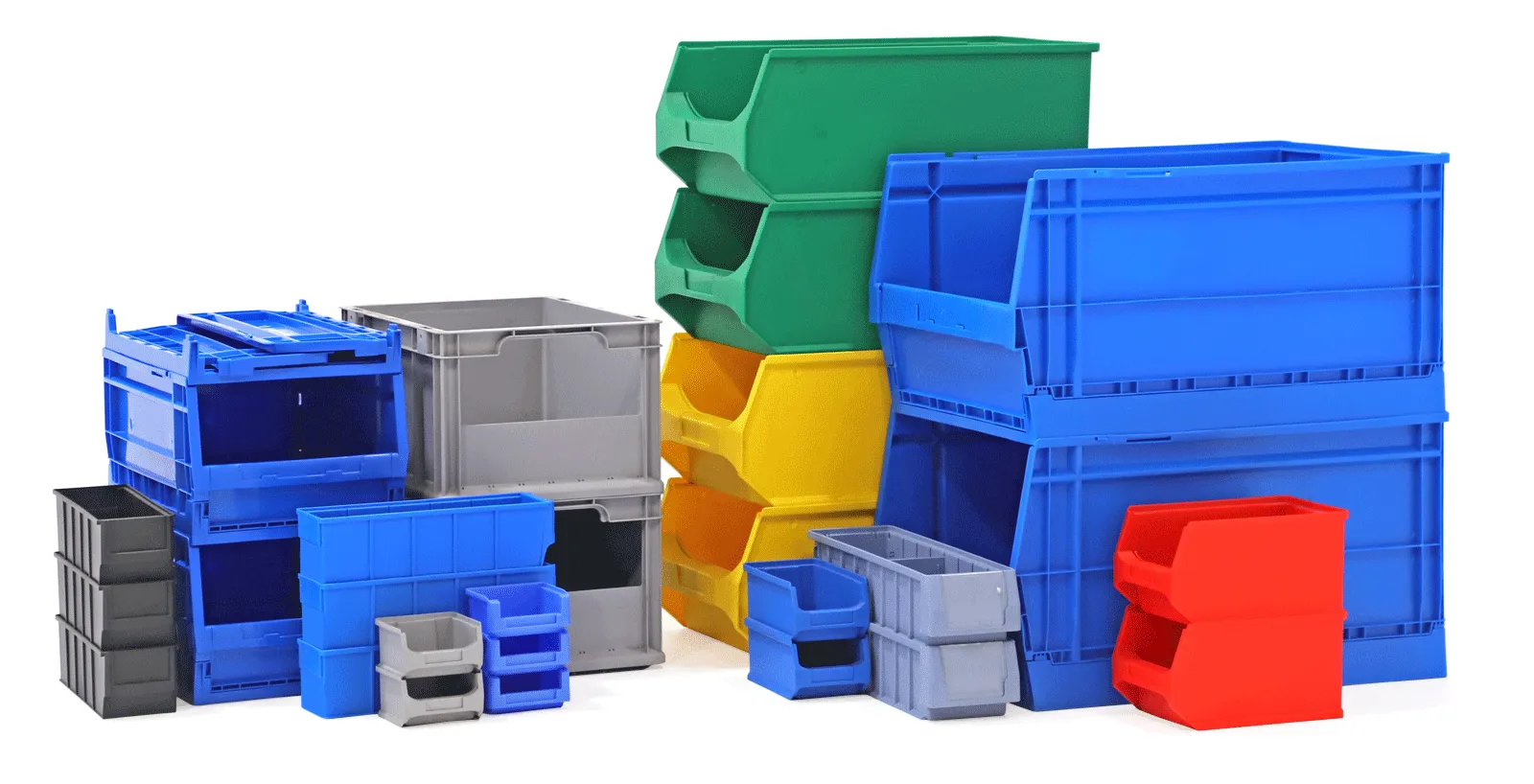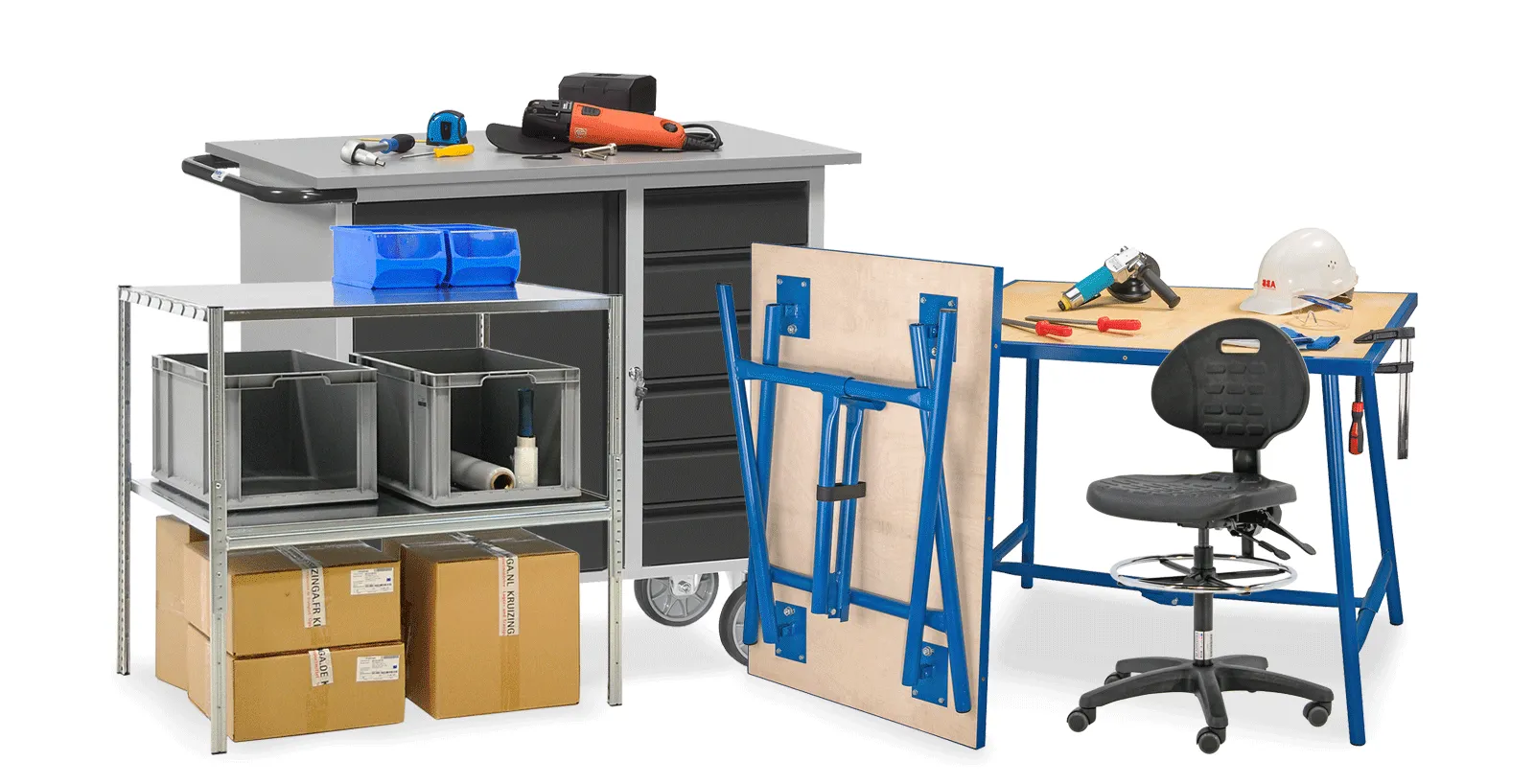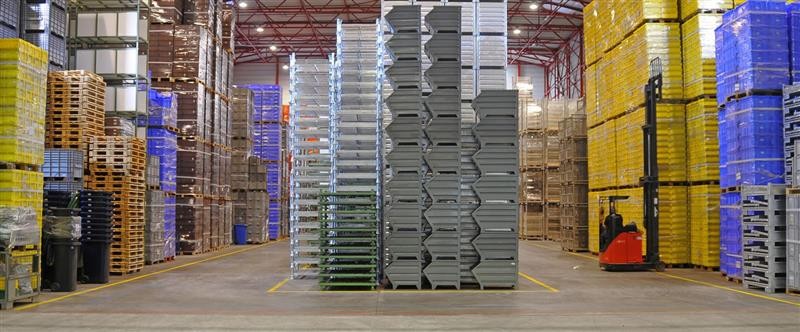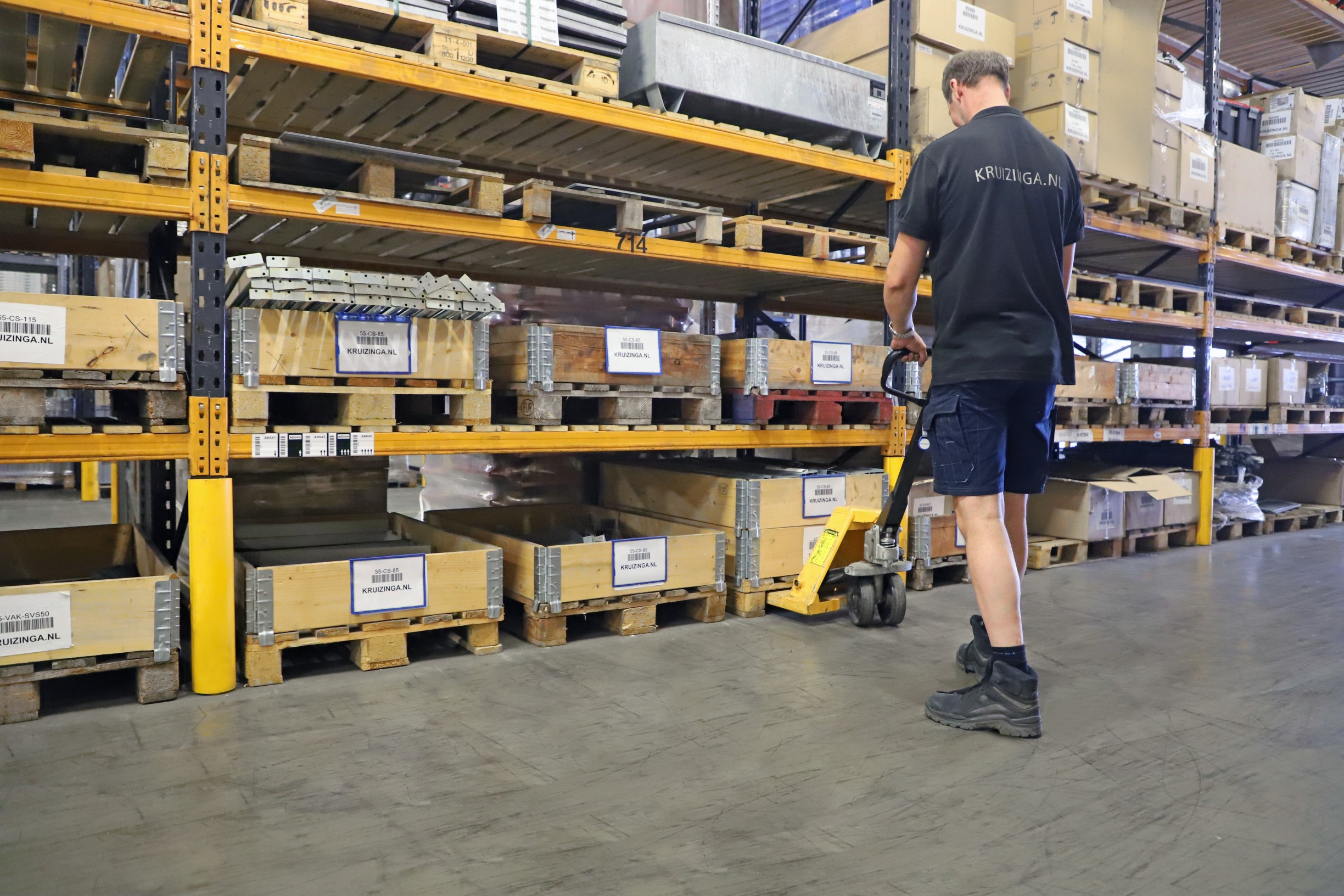In order to increase security in the warehouse, it is important to understand that security is a combination of several factors. But how can you reduce the number of accidents in your warehouse? How do you go about this and where is the best place to start? The following six steps will help you work towards a safe working environment for your employees.
1 | Separate vehicles and pedestrians
It is not without reason that this roadmap's first step is to separate pedestrians from vehicles. When it comes to safety, it is paramount that you separate pedestrians from vehicles such as forklifts. Collisions are the most common accidents in the warehouse. In most cases, pedestrians will not have been seen. This may be due to driver inattention or an excessively large load, resulting in a lack of complete visibility. However, there is another important cause: pedestrians walking through the warehouse in an unorganised manner. For example, does your warehouse have any designated pedestrian walkways? This can be done using floor markings, although even better would be a physical barrier. A physical barrier guarantees safety in the workplace. It is eye-catching and easy to place at various locations around the warehouse. Since they often extend to a height that people cannot easily step over, physical barriers are considered an appropriate measure for keeping pedestrians safe.
2 | Collision protection
In a warehouse, different vehicles drive past one another day in and day out, making it almost impossible to avoid any collisions. At best, we are talking only a collision incurring material damage. However, even then, the repair costs can be rather high. Fortunately, this can be avoided for a relatively low investment.
With collision protection you can easily provide the warehouse with an added degree of safety. There are many different types of collision protection, suitable for different situations and made of different materials. For example, there is collision protection made from plastic or steel, while you can also choose between corner protection, scaffold protection, bumpers and crash barriers. Some are more suitable for protecting shelving, others for vulnerable edges or corners, while there are variants that offer protection against forklifts. Want to know more about all the safety and protection specifications? Then read our guide here to make sure you know what is the best option for you.
3 | Signage
Well-thought-out signage in the warehouse ensures awareness of high-risk locations. This can be done by means of signs, mirrors, lighting and floor markings*. The designation of risk areas makes workers more attentive. You can choose to use different colour schemes, with each colour indicating a different risk (area).
For example, safety mirrors are a well-known and valuable way of providing clear visibility throughout the warehouse. These are often small adjustments that provide a lot more visibility and safety. The mirrors best placed, among other areas, at intersections and the ends of corridors. This allows everyone in the warehouse to see what is happening at these points.
While signposting on fixed elements in a warehouse is important, other methods can also prove of importance. For example, if using electric forklifts, these are not very audible. You can therefore equip these vehicles with striking colours, a sound signal and/or use a projected light signal on the floor. This enables workers to see in time whether a forklift is approaching.
*As mentioned earlier, the best types of shielding are physical barriers.

4 | (Ergonomic) tools
Employers are obliged to make safe work equipment available to employees so that they can perform their duties in complete safety at all times. Of course, which tools are best suited to improving safety differs from one industry to another.
First, personal protection. Something that is not always compulsory, but that does help to improve safety in your warehouse. Safety shoes are used in most warehouses, because heavy materials are often handled there. Safety goggles, gloves and eye-catching clothing are also common types of personal protective equipment.
In addition to personal protection, it is also important to think of ergonomic aids. In short, ergonomic working means adopting the right posture throughout the working day, planning sufficient physical and mental moments of recovery. This will ensure the safety and health of workers, thereby reducing the number of errors and absenteeism.
In various industries, it is increasingly difficult to find good staff, such as order pickers. One of the reasons for this is the physical strain involved, with the work often involving a lot of bending, reaching, lifting and walking with heavy loads, which often makes workers physically uncomfortable. Fortunately, there are still people who want to do this work, although it is important to limit physical complaints. Ergonomic aids can contribute to this. There are many aids that can make the heavy work easier. Wondering which tools you can use for this? Then read our blog post on ergonomic work.
5 | Keeping things tidy
Although this may not be the first thing you think of when it comes to a secure warehouse, it is a very important point: keeping things tidy. However, warehouses often have a lot of material lying around, which can lead to dangerous situations. In warehouses, a lot of work is often done with packaging materials, which, if left lying around, can lead to falls. Falling or slipping may sound like a minor accident, but it can result in unpleasant consequences. Both can be prevented with the implementation of safety shoes. These are often more stable and pose next to no danger when walking on dirty, slippery floors.
However, prevention is always better than cure, which is why it is important to keep the working environment tidy. Think of the cleaning of floors, machines and tools, but also the placing of waste containers at strategic location. This allows excess packaging material to be disposed of and sorted immediately.
6 | Involvement
The above points are primarily practical solutions, however, in order to apply them properly, there is an important factor in ensuring that they actually work. Namely, making sure that your employees are involved in the process. A safe warehouse starts with you and your employees. A large proportion of industrial accidents in the logistics sector are caused by a lack of involvement of employees in safe working practices. Safety rules are not followed, appropriate safety clothing is not worn and employees may act nonchalantly as a result. It is not easy to increase employees' safety awareness, however, with a few simple steps, this can be stimulated.
The first step starts with you. If you want your employees to work in a safety-conscious manner, you need to lead by example. This is the first step, The second step is the involvement of employees. It is important for employees to be involved in safety policy, as valued and heeded opinion can create more safety awareness within the workplace. Therefore, it is advisable to involve them in the development of safety measures, which will ultimately result in a clean and safe working environment. To be able to organise this, it may help to employ a consistent method. A standardised and systematic approach is paramount and will ensure that rules are complied with and the desired working environment is maintained.
Make sure the work environment provides the right tools to help workers work in complete safety. If they do not have the right tools, they are less likely to be aware of any safety risks. Use the above steps to minimise safety risks and increase the safety of your warehouse.
How can Kruizinga.nl help you?
Have you got any questions about this article? Or are you looking for advice on how to improve safety in your own warehouse? At Kruizinga.nl, we would be happy to help you with your warehouse safety needs. Feel free to get in touch with us, and one of our specialists will be happy to help you.
Download hier de gratis checklist!



























































